Why the Times?
The Times is one of the most widely used media outlets in the UK, attracting more than 21 million monthly unique visitors across the globe. Over the last few decades, the publisher has outpaced some of the big players in the media industry and evolved into a full-fledged digital publishing company with laudable technological capabilities.
Of all the other why picked the Times for our next Becoming study? Well, when we looked at the Times history, it was an easy ‘yes’ for us.
- The Times did a great job of converting its 21M+ web visitors and 1M+ print readership into a turnover of £326.4 million in 2019 (Src). Compared to the year 2018 where the company lost £8 million, The Times made an annual profit (after-tax) of £9.6 million in 2019.
- The publisher lost 81% of the total traffic when it introduced a paywall. Still, it survived and as of today, The Times has more than half a million digital subscribers and 21 million monthly visitors to the site.
Doesn’t it make you curious to know how a publisher turned its legacy print business into a successful digital media company? Especially, how the publisher increased its traffic even after putting all the content behind a paywall? We thought so.
Let’s get started.
How it all started?
‘The Daily Universal Register’, the print version of The Times was introduced by John Walter in 1785. After the acquisition of The Times in 1981 by Rupert Murdoch of News UK, the parent company announced the availability of resources and services of The Times online at www.thetimes.co.uk in 1999.
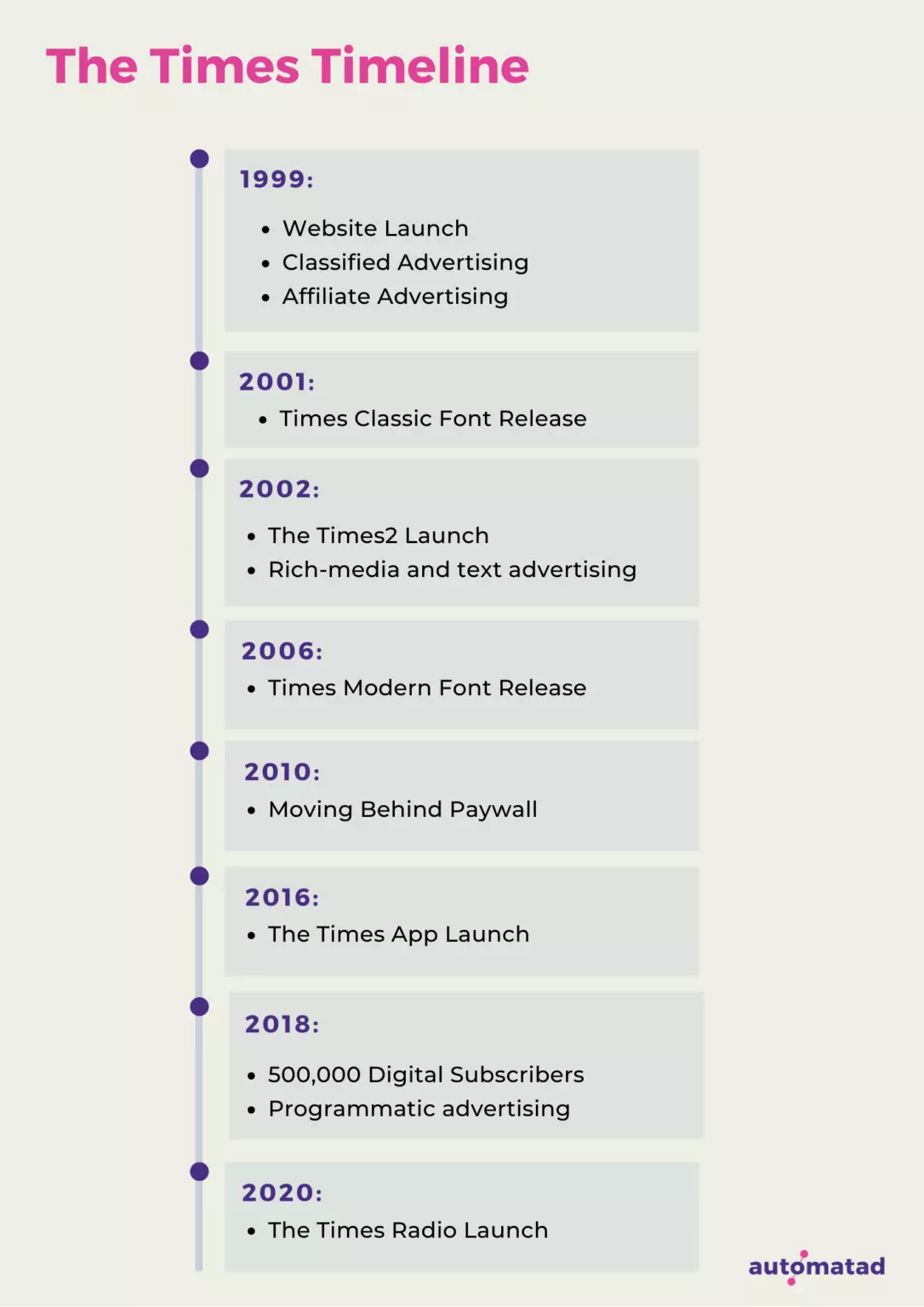
Where they are today?
As of today, the Times has 20.59 million monthly visitors (Src), and the majority of the traffic comes to the site via Google whereas social media platforms account for 14.76% of the total website’s acquisition. An editorial team of 500+ published hundreds of stories every day (Src).

Precisely, for The Times, Twitter trumps in the world of Facebook, Instagram, or any other social media platform. The publisher obtains 59.87% of its social traffic from Twitter followed by Facebook and Reddit.
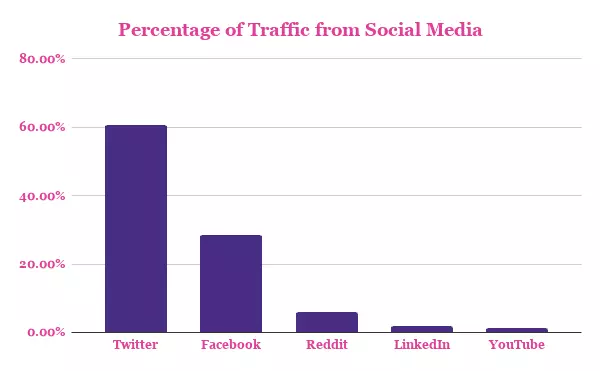
Becoming The Times
From Times UK to TimesOnline UK
1999 – 2005
The Launch
The parent company News International introduced the ‘www’ version of The Times in March 1999 to extend its audience reach across the globe. Since The Times has been around for several decades, the foundation was already well-established. However, print and digital ecosystems are different.
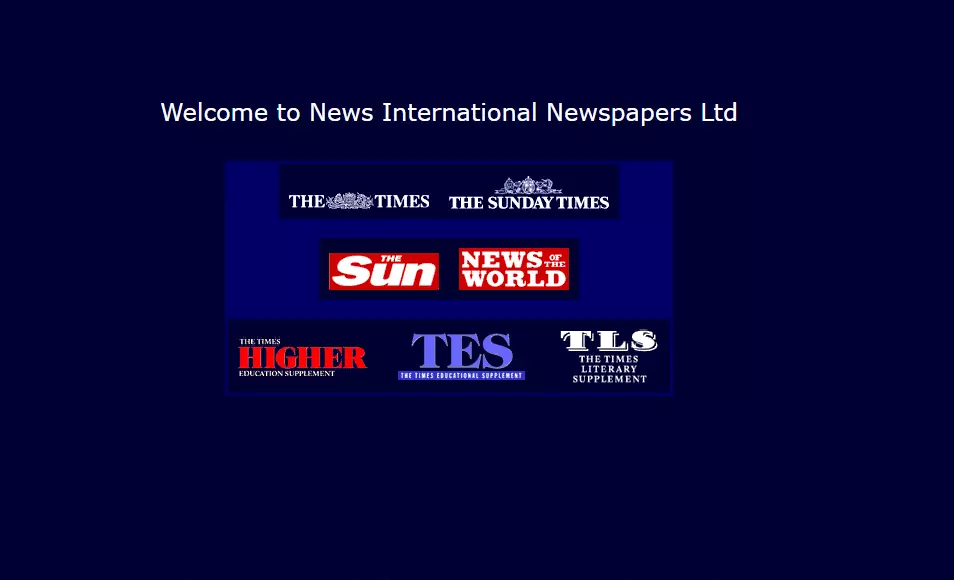
From content agility to storage to advertising and marketing, the publisher was facing the dilemma of resource allocation as it had to increase the website’s traffic as well as manage their existing print circulations. Besides, it also had to find new revenue streams for the company. So, in its early days, the publisher started to generate revenue with the strategies it had already in place.
Classified Advertising
Today, we look into the various sources to start with ads and we aren’t even using the term “Classified advertising”. Thanks to the evolution of the internet and technologies, the digital advertising industry has innumerable methods to monetize a publisher’s website.
But, for a publisher (especially newspaper or magazine publishers) in the late 90s, Classified advertising was one of the major sources of revenue. The Times was already having dedicated space in the newspaper for classifieds.
So, it continued with the same on the website also. The publisher promoted advertisers’ products and services via classified ads on The Times. The readers of The Times had a broad range of interests in various fields such as business, politics, sports, travel, and many more.

Taking advantage of that diversification, the publisher partnered with several advertisers to help them reach their relevant audience via Times and promote their products and services. Since these classified ads were on the website, the publisher offered two variants of ads – mono (black and white), and color. While a mono inventory was a little bit cheaper, color classified ad slots were sold at a premium price.
However, the prices for classified advertising on The Times and The Sunday Times were different. Though classified advertising helped the publisher to generate revenue, but not for a long period. That’s because the advertising industry was changing. This isn’t something we assumed. It was noticed by the publisher as well.
Wait, how the publishers convinced hundreds (if not thousands) of advertisers to buy millions of ad impressions? We believe there are two reasons:
a. Established print media business. Having a print readership and advertising relationship with brands should have helped the Times.
b. First-party Data. So, yes, the Times started collecting user data with its registration wall. While the Times (times.co.uk) made it to the users around 1999, the publisher started experimenting a few years back — 1996. The Times (with sunday-times.co.uk) republished its news stories online but put up a free wall for users to register and read for free.
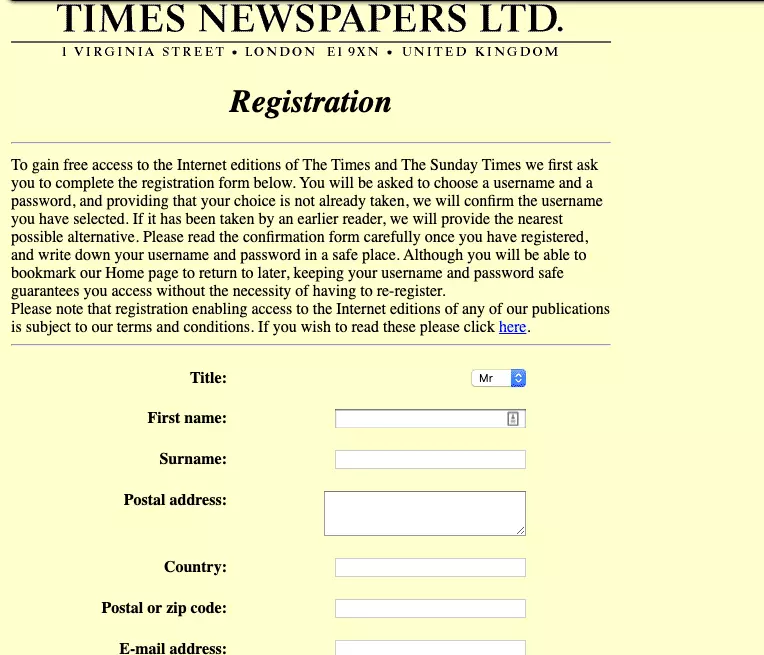
Rich-media Ads
The launch of DoubleClick changed the advertising business of The Times. In the same year when DoubleClick was launched, the publisher partnered with advertisers to seek rich-media advertising.
Even though the publisher knew it wouldn’t be easy and there wasn’t a vivid picture of online advertising, The Times worked with DoubleClick to explore the revenue opportunities. Surprisingly, the rich-media advertising ended up well for the publisher and became one of the nifty ways to monetize the website’s traffic for some time.

But, a publisher shouldn’t rely on a single strategy to build the audience base and collect revenue as well. Businesses get successful when they explore. Not sure about this? Scroll down the page to read how The Times understood the potential of affiliate marketing and allocated resources for it.
The Times E-Shop
When Amazon launched its Associate Program for the publishers to capitalize on eCommerce content, The Times joined the program and created a dedicated page for such eCommerce content — The Times E-shop.

Every time a visitor bought a marketer’s product via E-shop, the publisher got a percentage of commission of the sales, this, in turn, helped the company to generate significant revenue from the affiliate links. Soon after, the publisher realized that the eCommerce platform can be a genuine source of revenue so it spun off a few proprietary products with the help of business partnerships. One such product is The Times Atlas and World Maps.
Times Atlas
The growth and shift of the audience towards digital media encouraged the publisher to put Atlas on sale via its web property. For decades, The Times has been printing and selling the Atlas and Geography books and sold more than 2 million copies in different languages (Src).
The publisher partnered with collins.co.uk, HarperCollins, and many other online booksellers to increase the audience reach and sales of the maps, books, and Atlas. The prices of these books varied from content to content. Some of them were available at £15 while a few books cost £200 per copy.

Wondering whether selling digital products worked out or not? The Times Atlas has been one of the biggest best-selling reference books and it is still on the up since 1895. Was there any reason for selling Atlas or books on Geography?
Times Newspapers are read by the general audience across the UK and Times website attracts readers with its news content mostly. From its first-party data and audience interest, selling Atlas made sense.
Should we only rely on affiliate links or display ads to generate revenue? This was the question that pushed the Times to take the next step.
Publishers tend to oversee the significance of content and its impact on the audience. If your content has high-engagement and social shares, then it is clear that the readers are getting influenced. The Times understood that it can drive value for brands with its storytelling. And, that led them to experiment with branded content.
Branded Content
The concept of branded content was introduced in 1930 (Src) and wasn’t something new to the industry. However, for The Times, it was. Under the branded content policy, the publisher labeled the marketer’s content as paid and got paid based on the number of impressions (CPM metric).
Sometimes the content was from the marketers, but most of the time, the publisher’s content team developed it for them to drive more engagement and better results. Though branded content can be seen fairly easy to get started with, having a strong content studio that generates impressive ROI for marketers and revenue for publishers matters a lot.
One more thing to notice is, to have a successful branded content campaign, your traffic is important. As you know, branded post relies on web visitors to generate impressions and revenue. Though its 2001, the Times managed to pull in 18 million monthly pageviews (Src)
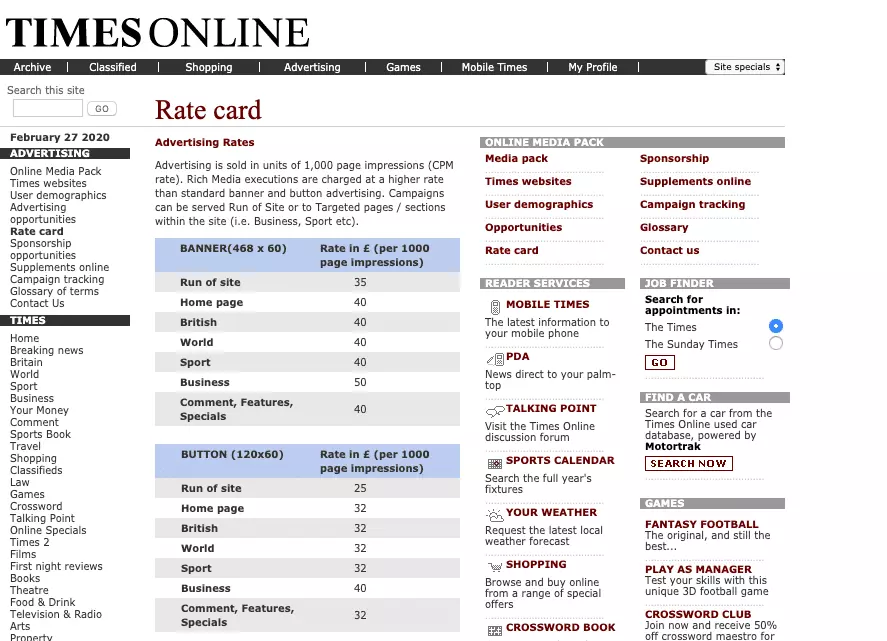
Times2
When the publisher realized that the visitors needed a way to read the most important content in a less-cluttered environment, it launched Times2. Times2 collected all the important articles from The Times and The Sunday Times in one place for the visitors to quickly pick and read.
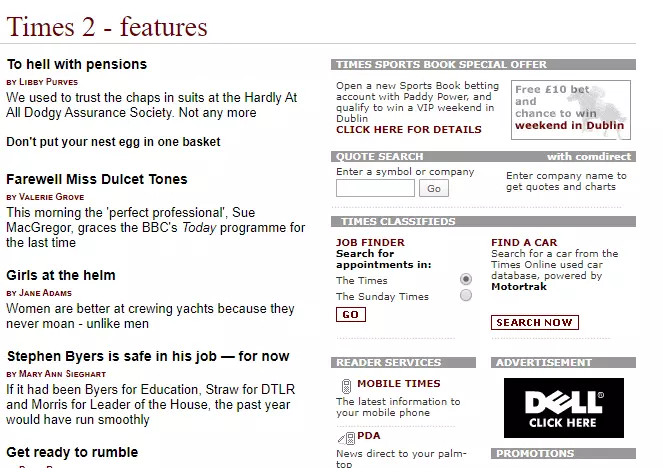
Like The Times, Times2 went under multiple alterations in its name, from Times2 to T2, and then back again to Times2. Though Times2 helped the publisher to get bonus traffic to the website, the publisher had to shut it down during the recession period of 2009 (src).
Sidenote: It seems News Corp. still likes to own a news aggregator. It recently launched Knewz.com.
Times ePaper
While working on Times2, the publisher was also focusing on Times ePaper and introduced it in a few months after the launch of Times2. The ePaper was meant to enable the visitors of The Times to effortlessly read the website’s content in a newspaper format.
The Times ePaper cost a new user $49.99 per year and returning users $39.99 per year (Src). If you are unfamiliar with this strategy of introducing an ePaper, then you’d know that ePaper can be one of the media to target the audience commuting from one place to another. The strategy attracted a large audience and increased engagement with the content.
“Times Online is performing very well in terms of overseas subscribers, which is why the e-paper is being introduced. We would like our overseas audience to benefit from being able to read the Times newspaper on the day of publication on their screen.”
– Ms. Van Den Belt, Digital Director, Times Online
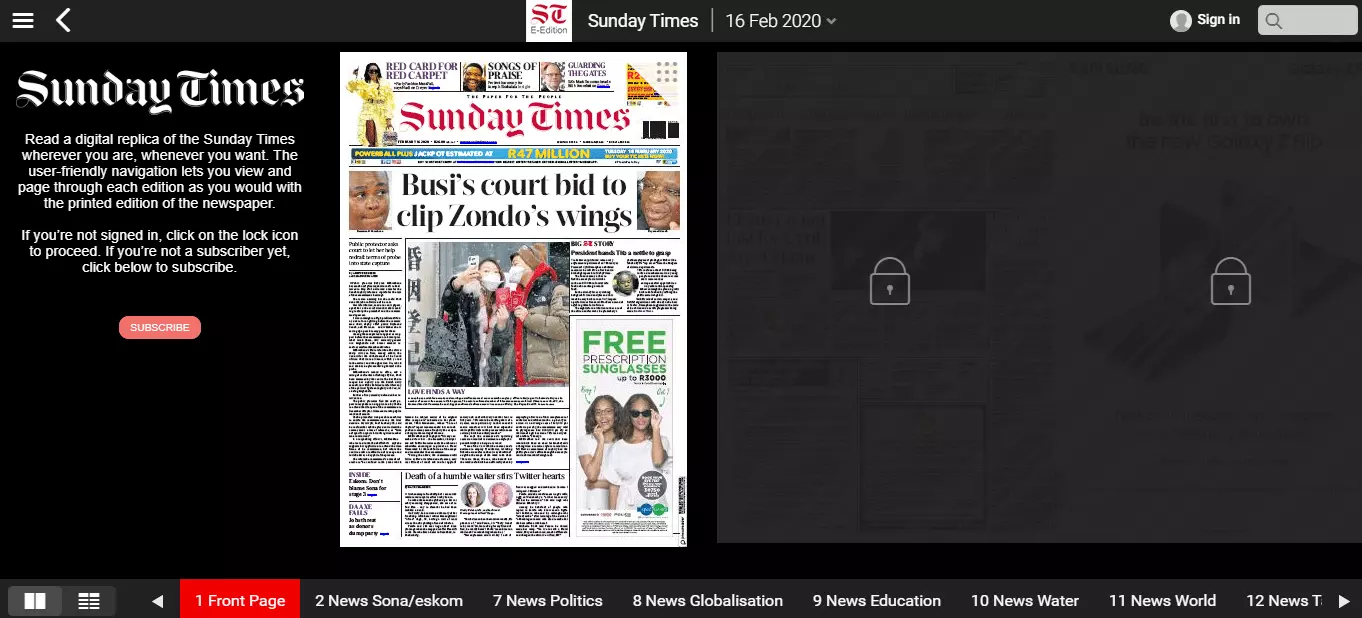
Moving Behind Paywall
2006 – 2012
Culture+
Culture+ was the Time’s first attempt at subscriptions. To get an initial model for digital subscriptions in place, the publisher sketched out Culture+, an exclusive program covering arts and entertainment for the users who were already accustomed to The Times.
Started in 2008, Culture+ garnered 90,000 active members in just a year (Src).
“The success of Culture+ has shown us that readers trust us to deliver what they want. Our greatest asset is our content. Times+ enables us to offer readers the chance to get even more out of the sections of the paper that they most value.”
– John Witherow, Editor, The Sunday Times
After mapping out the number of visitors who signed up for the Culture+, the publisher was brainstorming a list of ideas to improve the subscriptions as the media industry were struggling to grow their revenue during the recession.
The team had a bunch of ideas already, prioritizing the top ones wasn’t easy. Looking for a quick solution and win, the publisher ended up introducing Times+, an independent subscription model that would provide exclusive access to The Times premium content.
Content Highlights:
The publisher never failed to capitalize on the opportunities existed within itself. Today, most of the publishers are trying to aggressively pile up on ads or sponsorships or events, without considering what readers’ value. More often than not, you will like to see if you can increase the page RPM with a new ad-unit on the sidebar, but your readers wouldn’t like to have an ad. Instead, they’ll want something that provides them value.
The Times, with its tens of millions of readers, had the chance to add new ad units and substantially increase the revenue. But the publisher went with a quick link section that can help the readers to land on the interesting stories.
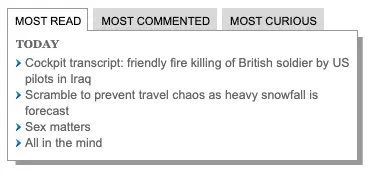
As an ad tech company, we tend to think the same way. Deliver a better user experience, increase engagement, time on site, page views, you will end up with higher revenue than you imagine.
Times+
Times+, the subscription model of The Times added Culture+ and Travel+, a new travel section for the visitors. But, a publisher cannot unlock the doors of success, unplug the revenue options by just charging the visitors to read the content without giving them enough reasons. So, Times+ offered access to exclusive events and programs such as an evening with a famous Times’ journalist, and exciting offers like free film screening, free eBooks, and many more to attract the audience.
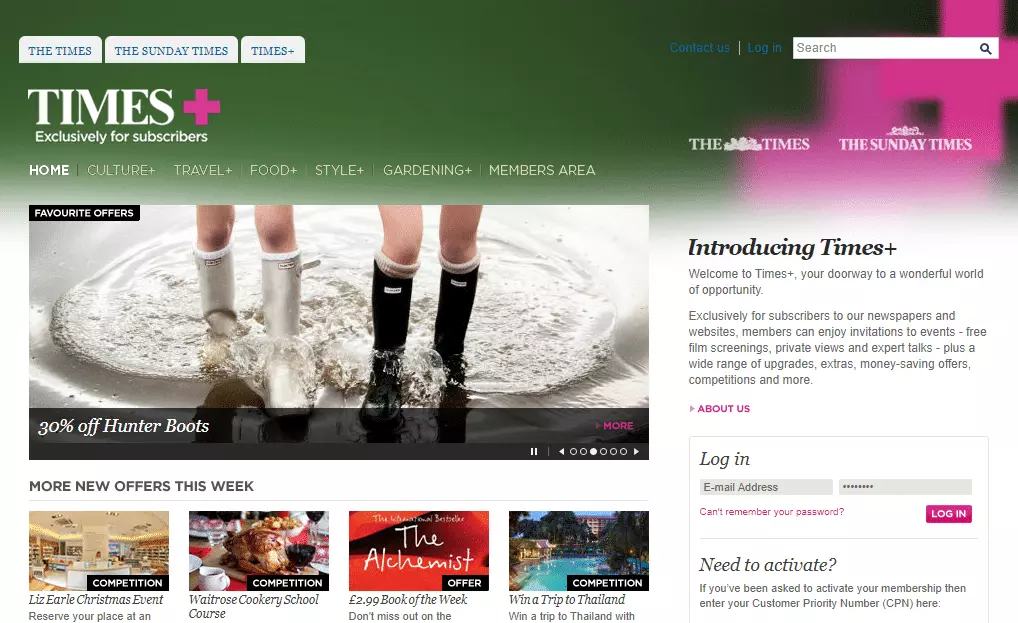
Initially, to get access to Times+, a new reader has to subscribe and pay £50 per year, and those who were already registered with The Times had to pay half of the amount i.e. £25. And this seems like the biggest challenge for the publisher at the time when people could scourge free content from anywhere on the Internet.
Not only did Times+ offer discounts to encourage the visitors to buy the subscription packages, but it also offered promising gifts and vouchers. As an example, the publisher partnered with some vendors (cable TV providers and streaming service providers) to help them sell their products and offer those products (e.g. Sky + HD boxes) to Times+ readers as gifts if they buy one of the Times+ packages (Src).
“We have the most varied, passionate and interesting readers. Times+ will bring those passions and interests to life. I am delighted we are able to give readers the opportunity to become part of the family of The Times.”
– James Harding, Editor, The Times (Src)
Introducing Paywall
Hoping to multiply the success of Culture+ and Times+, the publisher pushed the entire content of The Times UK behind the paywall, restricting the unsubscribed visitor to get access to The Times. Now, the users have to pay £1 for a day, and £2 for a week to access any of The Times content.
Having a mammoth of traffic on the website, the publisher was confident of the subscription hypothesis. Moreover, the publisher knew every experiment needs a baseline so that you can measure the results, otherwise, it’s just about spinning the wheel. So, to create a baseline, the publisher divided The Times and The Sunday Times (the sister publication of The Times) into two separate divisions (domains) for the first (Src).
“Our greatest asset is our content. Times+ enables us to offer readers the chance to get even more out of the sections of the paper that they most value.”
– John Witherow, Editor, The Sunday Times
As a move to drive additional revenue and neutralize the decline in the newsstand sales of the newspaper, moving the entire website’s content behind a paywall was risky and many of the competitors and media outlets criticized this step of The Times. Surprisingly, amidst all this clatter, the publisher garnered more than 100k digital subscribers for The Times and Sunday Times in just a few months since the launch of the paywall.
The pattern of success was going well until the end of October 2010 when the publisher found out that the number of visitors fell by about 87%, from 21 million unique visitors fell to 2.7 million (Src). The fundamental part of introducing the paywall was to generate revenue. But, was that even possible with such a huge decline in the website’s traffic?
Of course, no. So, how did the publisher overcome this failure? Did they learn something? Yes, they did.
Even though the paywall was looking like a failure for many in the industry, the publisher was still looking ahead and experimented with every possible option to figure out the roadblock in the strategy and made the vision of the company achievable.
“When we first introduced subscriptions people thought we were crazy… if you look back on it, it seems very logical”
– Alan Hunter, Head of Digital, Times newspapers.
It’s tough for the publisher to get back to the usual zone of traffic and revenue but apparently, it did. Gradually, things started falling in place when the publisher turned the hard paywall into flexible and gave free access to some of the articles to the website visitors.

These flexible and metered paywalls were a win-win condition for both – readers and the publisher. And, for the first time, digital subscribers outnumbered the print subscribers of The Times and it had 255k digital subscribers in 2018 (Src). Having a failed strategy isn’t the end of the road, and The Times taught this very well.
Building Internal Tools & Programmatic Advertising
2013 – 2019
Till 2014, The Times was known as a print as well as a digital publisher. Afterward and even till today, the publisher is also known as a technology company as it is one of those publishers who rely on their in-built tools and technologies rather than depending on any other third-party vendors.
But, aren’t you wondering how did the publisher know building the proprietary tools wouldn’t become a mistake? We guess you are. And we were also when we came across how The Times benefits from the dedicated team of web developers, data scientists, engineers, etc in their newsroom.
So, let’s gather you The Times’ in-built tools and platforms that help the publisher to take the business to the next level.
Project D
The creation of spectacular and unique content is mandatory for publishers, and especially when you also publish current trends or worldwide news. And, being a veteran in the publishing business, The Times knew it very well.
But, along the way, there was one problem that came in between the content game – when should the publisher share or update the content to get it in front of as many visitors as possible and to get maximum engagement?
So, to answer the question, The Times’ editorial team developed Project D. Project D helped the publisher to get an overview of the busiest hours of the website and understand pageviews and engagement rate and what kind of content resonates best with the audience during the peak hours.

After experimenting with different content posting time and collecting the data, the editors of The Times updated the content in those peak hours instead of refreshing web pages as soon as the news came out (Src).
“This change has been “revolutionary” because both the editorial team and the marketing team now have “appointments with subscribers and registered users that we didn’t have previously”.”
– Catherine Newman, Chief Marketing Officer.
Though the staff of The Times disagreed with the new content publishing method, soon after they realized that it helped to increase the engagement rate on the website. Sure, they might not be the one breaking the news on the Internet, but their content got more pageviews than before.
Most importantly, editors had the flexibility to publish big breaking news if it is necessary. There’ll be times to break the story first and reap the flooding traffic.
CardKit
Cardkit is an open-source image creation tool that helps the editors and journalists to create branded elements, cards, or images for Facebook, Instagram, Twitter or YouTube.
“There are lots of tools out there that do similar things to this. but we wanted to make one that was really easy to use, was flexible and gave control, but also added the most appropriate restrictions in terms of making sure it stayed to a consistent design”.
– Chris Hutchinson
CardKit has different themes, filters, and various other uses for The Times newsroom editors and designers. Including social media, the publisher also uses the tool to create email newsletters (Src). One of the newsletters that witnessed huge success is Red Box. The newsletter was subscribed by more than 30,000 people in just the first five months .
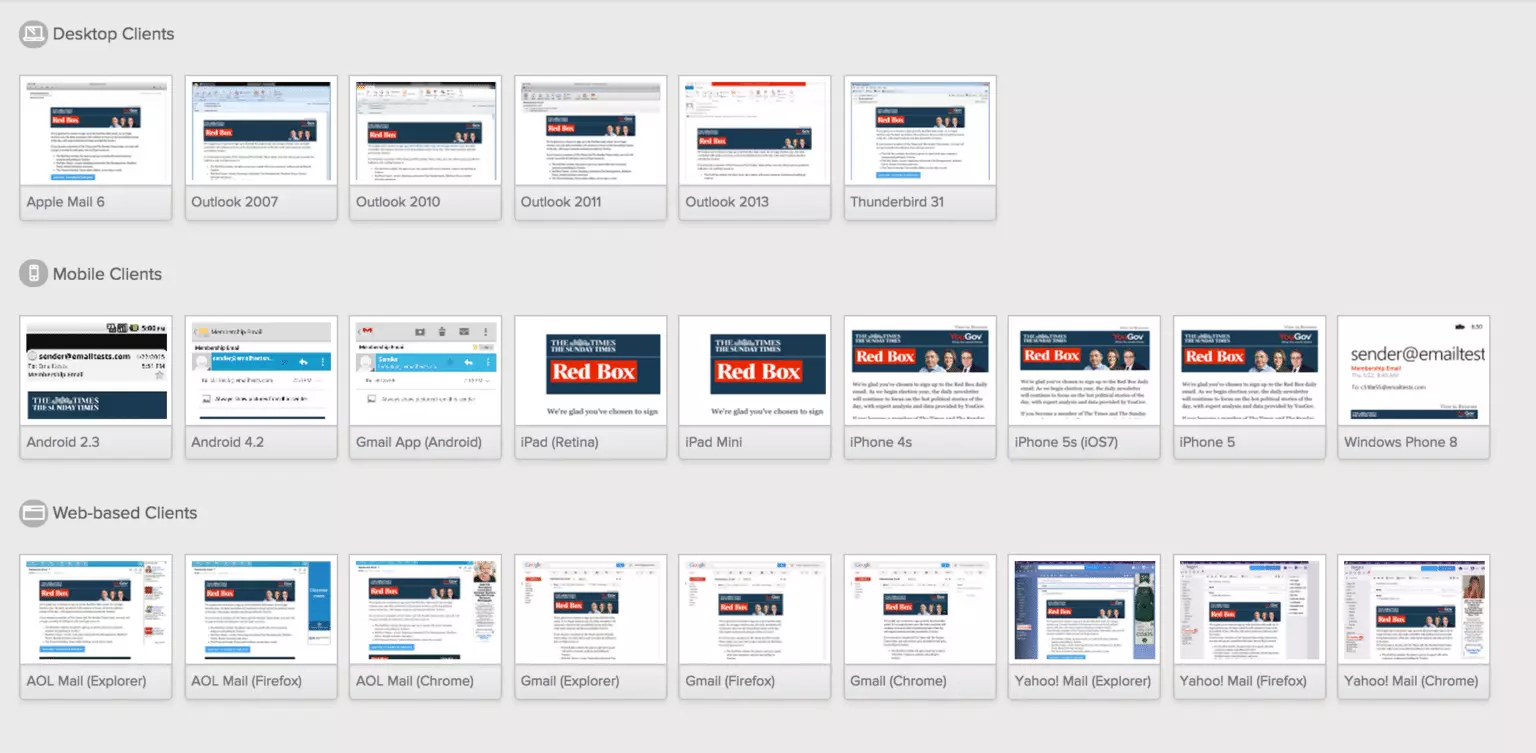
App Launch
By the mid of 2016, the consumption of online content via mobile was growing at a fast pace. As said by the publisher, 5.39 million people consumed The Times’ content via mobile that was up by 1.39% than the last year (Src).
So, to increase the readership on mobile and tablet, the publisher launched an app, The Times of London Weekly, where visitors can read The Times content easily. Unlike updating the content daily, the publisher updated the content once a week (on Thursday) and featured the best of business, finance, sports, and other news.
Similar to The Times website, the readers were allowed to get content free for one month, and after that, they had to pay £2.99 per month (Src). At the time, pre-tax profit was around £11 million (Src) and the publisher had 182,000 digital subscribers.
Programmatic Monetization
Digital subscriptions still contribute to the revenue pie of The Times. But, in the past few years, many publishers started focusing on driving revenue from programmatic advertising. And, in 2017, The Times became dived into programmatic.
The publisher focused on header bidding to run display and video ads to ensure the best possible revenue for its ad impressions. The Times’ advertising team partnered with multiple supply-side platforms (SSPs) such as AppNexus, Rubicon Project, and Index Exchange, and ad exchanges to sell their ad inventories at the highest possible CPMs.
Not only does it utilize header bidding for display ads, but it also takes advantage of Prebid’s open-source package for video ads. The publisher displays videos on the ad inventories using Video.JS as well as BrightCove video players.
Digital Butler
By June 2018, The Times and The Sunday Times had 500k+ subscribers for the first time (Src). It took nearly 8 years for digital subscriptions to overtake the print. But what did the publisher did to hit the milestone?
Though 8 years might seem like a long period for some of us, the publisher has been implementing various strategies to increase the digital subscribers in this duration. And, one of the most important steps it took was Digital Butler also known as JAMES.
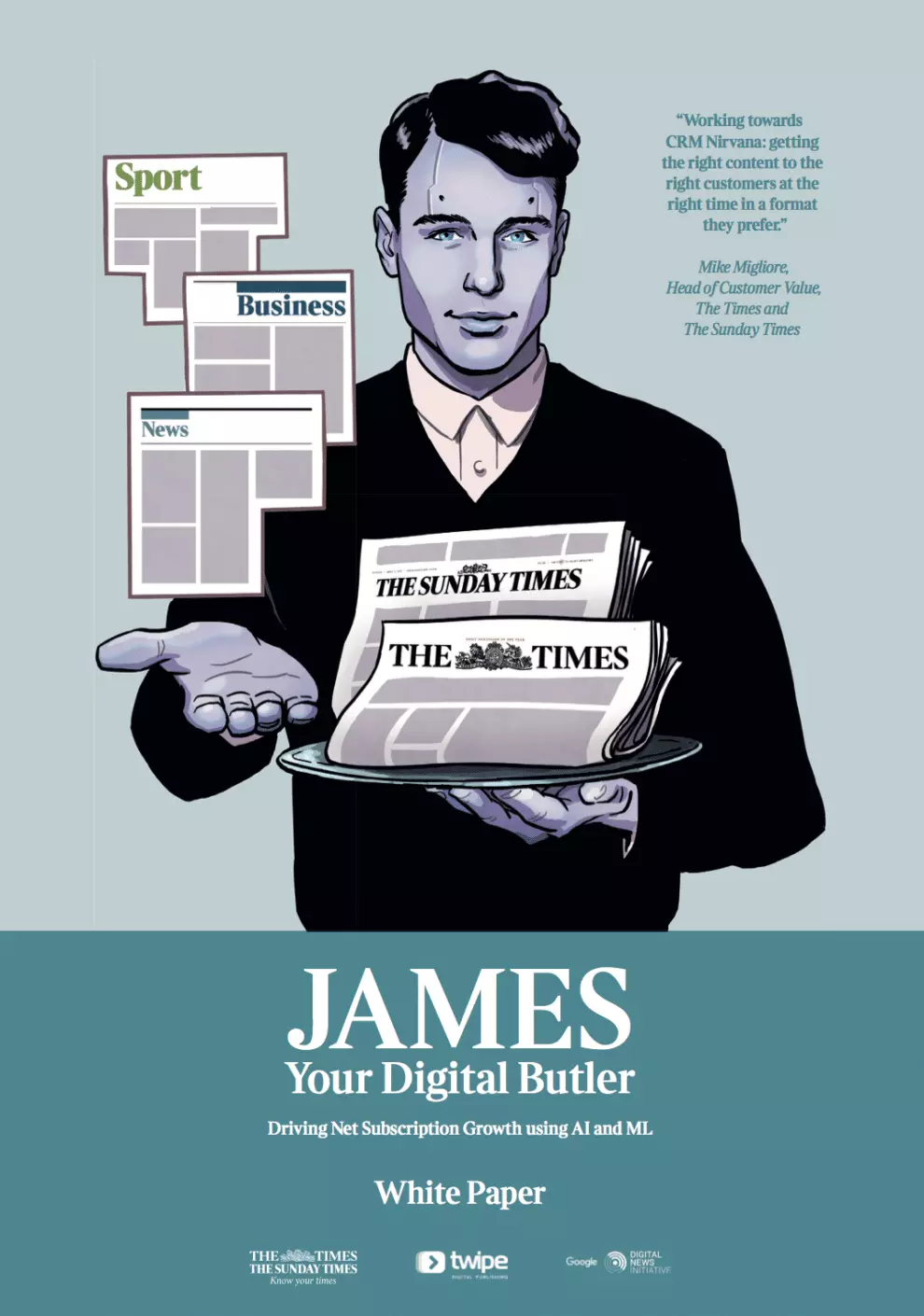
Digital Butler is a machine learning-based project that helps the publisher to know about the right time to send messages or emails to the users and the type of content preferred by the visitors. Letting the visitors know about the content they wish to read increased the readership of The Times (Src).
“The idea is, if we have hundreds to thousands of subscribers, we should have hundreds of thousands of journeys into the product,”
– Alan Hunter, Head of Digital, The Times (Src)
Moving forward, the publisher also integrated the Data Management Platform and Customer Data Platform to get more audience insights.
Data Management Platforms
While the overall digital subscribers were relatively smaller than the total traffic of the website, the proportion of revenue subscriptions has a huge impact on the revenue of The Times. And, this contribution inspires The Times to deliver relevant services to the audience and the advertisers.
Since The Times had a lot of data (first-party, second-party, and third-party, it partnered with some of the top DMPs and CDPs including Lotame, CPX Interactive, and Tealium to harness the power of audience’s data. The publisher integrated these platforms to its Content Management System and utilizes various features of DMPs and CDPs to deliver customized content to the relevant audience segment at the right time.
Besides, the publisher has integrated Permutive’s Data Management Platform to leverage its technologies to take advantage of first-party data. Looking at the current trends and how the advertising industry is shifting towards a cookie-less ecosystem, it was necessary to open up new ways to innovate audience targeting for better revenue and ROI for advertisers.
Conclusion
Recently, the parent company of The Times, News Corp, unveiled a digital talk radio station to create a new audience acquisition channel for The Times and establish meaningful relationships with readers over airwaves. If you think about it, it’s quite clever. As social media platforms and search results pages are getting competitive every day, it is necessary to look for new opportunities. With podcast listeners on the rise, the Times may end up creating a profitable channel for itself.
From classified to header bidding, registration walls to paywalls, the Times tried them all. And, that’s why the publisher is prepped up to handle the cookieless future well than the peers. We’ll talk to you again with another interesting story. Have a suggestion? Let us know in the comments.























